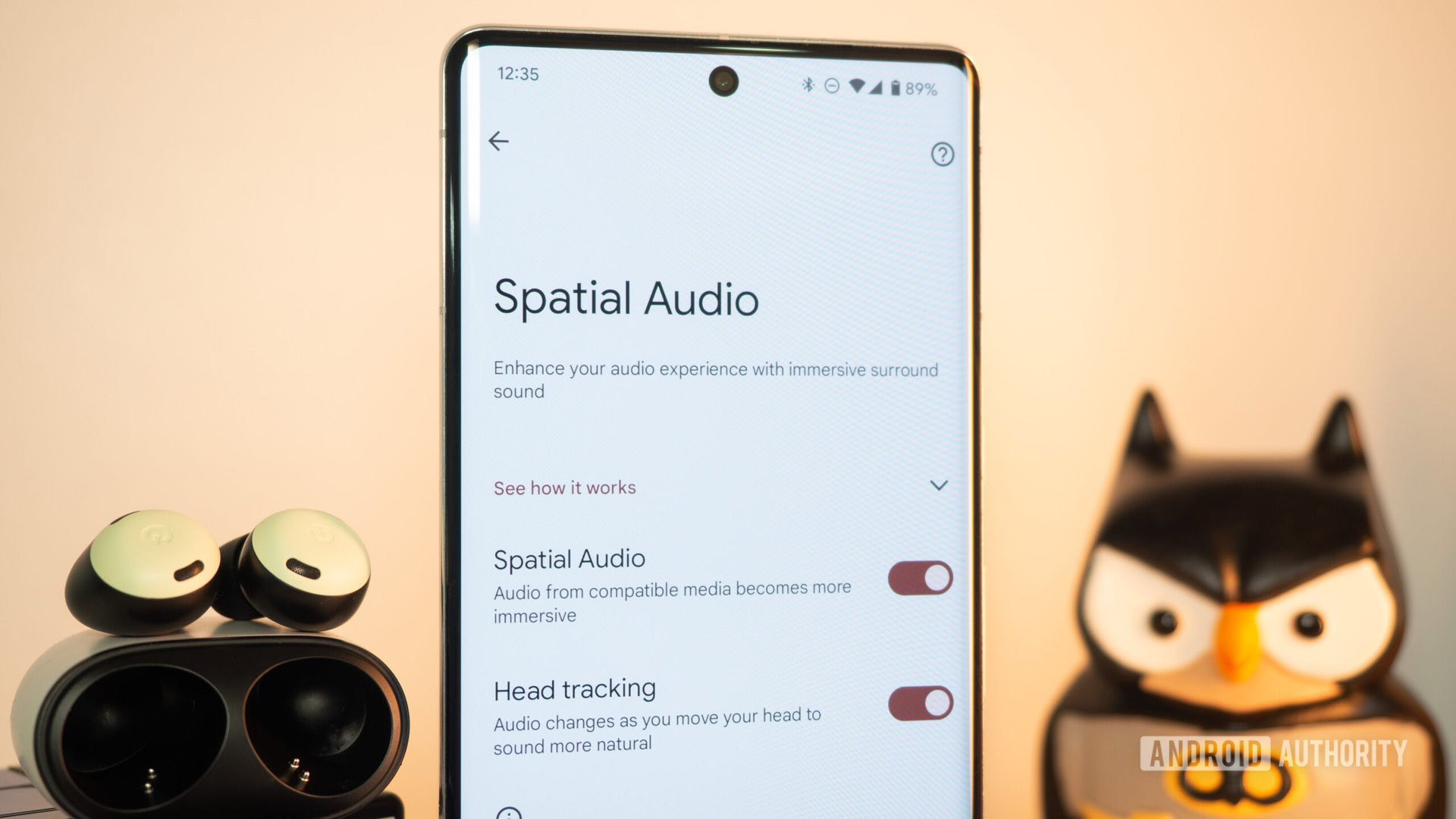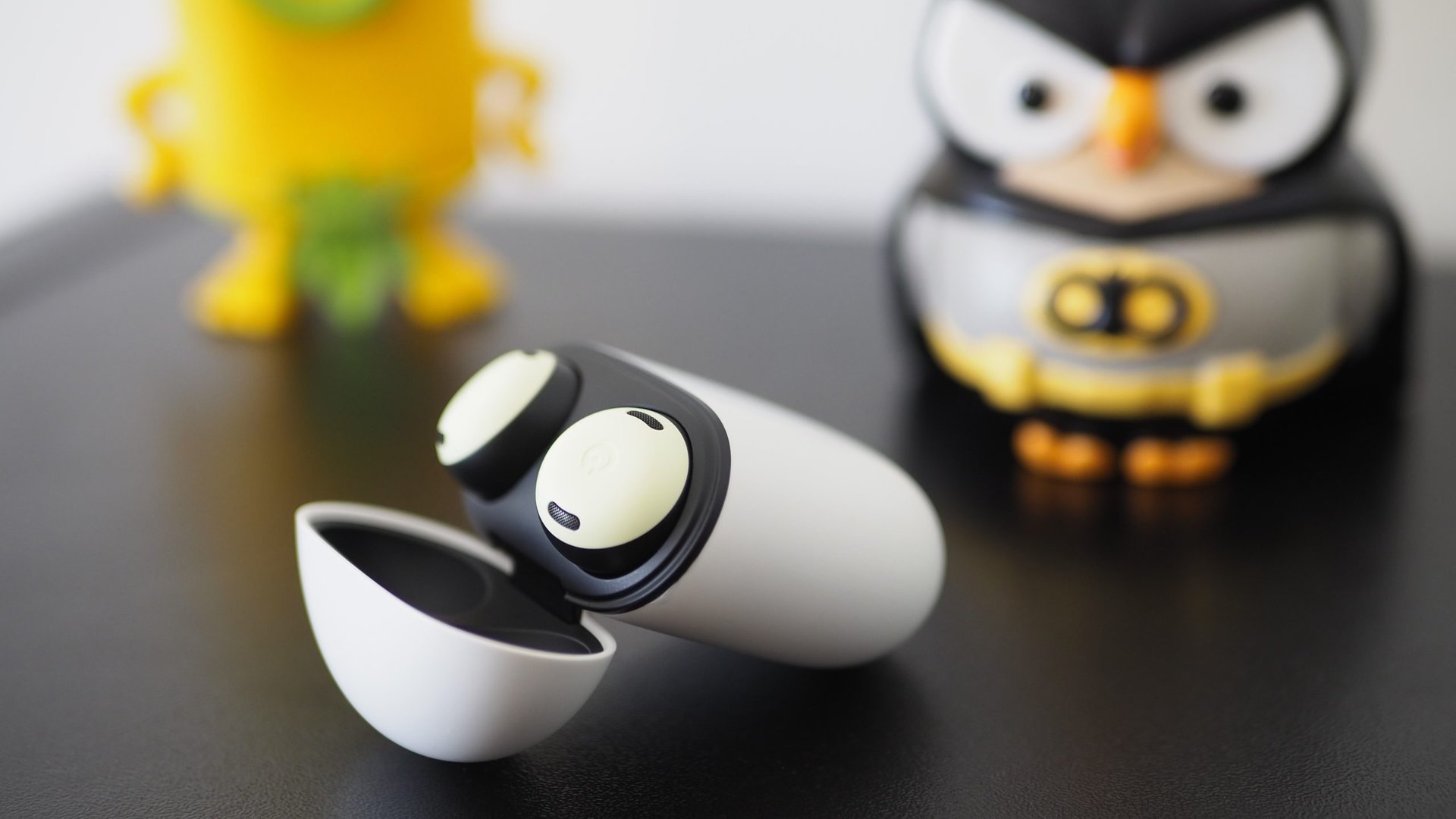Affiliate links on Android Authority may earn us a commission. Learn more.
The Pixel Buds Pro's head-tracked spatial audio is a wonderful, useless tech
April 1, 2023

I put the Google Pixel Buds Pro in my ears, pick a YouTube video with spatial audio, leave the phone on the desk in front of me, and roll away on my revolving desk chair. I let go and start spinning. Whichever direction I want, whichever way the sound takes me. I stop, change midway, slow down, speed up, and yet the sound remains suspended in the space around me. It kind of feels like magic.
At one point, I close my eyes because the dissociation between my real environment and what my ears are hearing is too weird. How can I be moving (and so are the Pixel Buds in my ears), but the sound is still palpably in the same place? It feels like there is an entire immobile surround system all around me.
I spin, stop, turn midway, slow down, speed up, and yet the sound remains suspended in the space around me. It feels like magic.
Forget about left and right channels; this isn’t anything like that. The voice that was coming from the left earbud when I was looking straight at my phone is now coming from the right earbud after I turned to look the opposite way. What kind of sorcery is that?
Fixed spatial audio creates an immersive, surround-like sound from regular earbuds and earphones. Instead of the simple left-right channels, the sound is more nuanced and can feel like it’s coming from behind you or in front of you too, for example.
Head-tracked spatial audio is similar, but it uses sensors to create “sound objects” around you. The surround sound doesn’t move with you, it remains in place while you move.
The easiest way to describe fixed vs head-tracked spatial audio is to imagine yourself wearing an entire surround system around your head that moves with you (fixed) versus standing in the middle of a surround sound that stays there while you move (head-tracked).

Head tracking on top of spatial audio isn’t new, but this is my first experience with it as the Google Pixel Buds Pro only recently got the update. My eyes lit up when I tried it the first time. Google offers a video to test it in the Buds’ app under the Spatial Audio > See how it works drop-down, and all I did was leave my phone on the desk and twist my head left and right. My next test was what I described above with the revolving chair and the YouTube videos, and that’s where I was left in awe.
This wonderful tech felt unlike any other audio experience, but it left me asking: Why? Why would I or anyone use this?
It’s not like I’d get anything out of enabling head tracking on my Pixel Buds Pro while actively watching movies or TV shows. Unlike basic spatial audio, which is arguably more useful because it brings a surround sound experience to any wireless earbuds and headphones, the extra head-tracking feature requires your head to move … by design. And I don’t know about you, but my head doesn’t move a lot while I watch movies.
Head-tracked spatial audio requires your head to move by design. Thing is, my head doesn't move a lot when I'm watching movies.
I think head tracking on the Pixel Buds Pro could be more interesting once it’s also available through audio-only apps; the Apple Airpods Pro (2ng gen) already offer that with Apple Music and Tidal on iPhones. I imagine it’ll be nice to feel the music come alive around me and follow my head as I walk and turn. Or to completely immerse myself in a song without having to buy a full surround system. But with video? Unless I’m watching something on AR glasses that also move the visuals along with my head, there’s no point in audio doing that on its own.
As it stands, this is a wonderful but kind of useless tech. It works — and it works really well when you find supported content — but there’s no real benefit to it and it makes me wish these companies were spending their R&D investments on more impactful tech. But part of me just wants to appreciate head-tracked spatial audio for what it is: an awesome moment of magic.


How do I test head-tracked spatial audio on the Google Pixel Buds Pro?
There’s a long list of requirements to get spatial audio with head tracking on the Google Pixel Buds Pro:
- The buds: You obviously need the Pixel Buds Pro, but they have to be running firmware 4.30. If you haven’t received this update yet, try going to More settings > Firmware update in the Buds’ app, open the charging case, and leave the buds inside. This should trigger an update check. Google rolls these out in waves, though, so be patient if it doesn’t show up.
- The phone: You have to be using the Buds Pro with a new high-end Pixel, like the Pixel 7 and 7 Pro or 6 and 6 Pro. The A series isn’t supported.
- The setting: Open the Pixel Buds app again and make sure both toggles under Spatial Audio are enabled — see the image at the top of this post.
- The content: Not all content is supported for spatial audio. You can find Dolby Atmos content on HBO Max and Netflix Premium, or you can go to YouTube and look for videos with an “EC3” audio encoding. Check my explanation for all the intricacies of spatial audio on Pixels, but as a shortcut, this 4K Clips and Trailers channel and this 4K HDR Media channel have a lot of (but not all) compatible videos.
Thank you for being part of our community. Read our Comment Policy before posting.